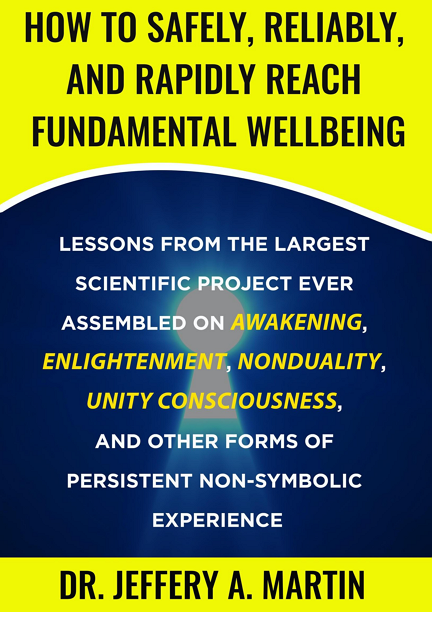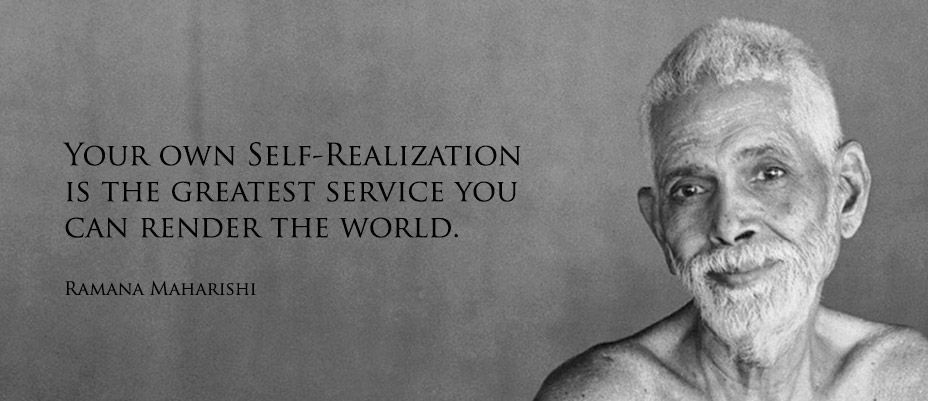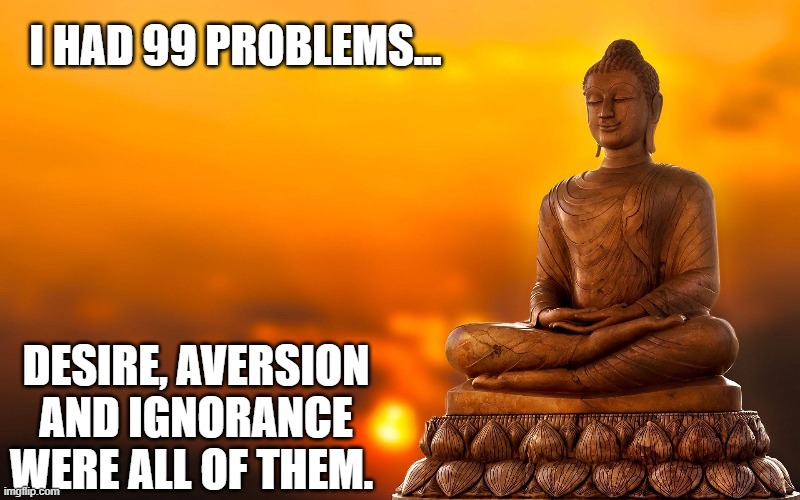 Can you apply the scientific method to systematically investigate and learn from people who have had awakenings across different cultures and within different religions?
Can you apply the scientific method to systematically investigate and learn from people who have had awakenings across different cultures and within different religions?
And if so, how would you go about it? What do you measure, how do you measure, who do you measure?
And once that is done, can you learn from these experiences and find a pathway for people that haven’t awakened to help them make the shift?
This is the project Jeffery Martin started on. He published a lot of information on what was found in the book – The Finders – and on the website – Center for the Study of Non-Symbolic Consciousness.
He explains more about this project in this youtube playlist with presentations:
On the website there is a free Ebook available (Mirror) on how to use what they found in their research to help you make progress towards your own awakening. Both the website and the Ebook have a lot of interesting pointers.
 We will start here with a list from their site with what they call: The 10 myths about fundamental wellbeing.
We will start here with a list from their site with what they call: The 10 myths about fundamental wellbeing.
Myth #1: There are very few people in Fundamental Wellbeing.
Myth #2: When you’re in Fundamental Wellbeing, you know it.
Myth #3: Fundamental Wellbeing is Spiritual.
Myth #4: Achieving Fundamental Wellbeing requires you to give up normal life, and maybe even go to the extreme of living like a monk.
Myth #5: Fundamental Wellbeing will mess up your life.
Myth #6: Transitioning to Fundamental Wellbeing takes a long time and involves torturous practices.
Myth #7: Peak and mystical type experiences point the way to Fundamental Wellbeing.
Myth #8: There’s one true path to Fundamental Wellbeing.
Myth #9: There is only one type, or one correct type, of Fundamental Wellbeing.
Myth #10: Learning about Fundamental Wellbeing is the best way to get there.
They also talk about what kind of strategy helped people reach fundamental wellbeing.
- Not all methods are created equal. Some are better than others, and you definitely want to use the best ones that you can to give yourself the best opportunity for maximizing the benefits you get from your efforts.
- That just knowing some, or even many, of the best methods isn’t enough. You have to find the ones that work best for you, right now. Remember that methods are created by people, and you’re a person! So, you can feel comfortable that it’s okay to modify any of them, combine them with others, and so on so to try to get them to be maximally effective for you.
- We talked about the fact that methods that work well for you now will most likely stop working at some point. At first, they are in sync with you which is what allows them to work. Then, they change you and are no longer matched up to the “new you.” At that point, you need to find a new one that fits who you are now.
- We also talked about how methods can stop working for a bit, but not be totally out of sync with you, and how to figure out whether or not that has happened. And, we discussed that you need to move on when a method stops working for you.
- We talked about how to best manage your meditation practice to avoid negative experiences by using practices from positive psychology, and the benefits of being in higher levels of wellbeing if your goal is to transition to Fundamental Wellbeing.
- Finally we covered the most important secret of all, one that virtually no one else ever seems to mention — the critical importance of sinking in. We discussed how the only reason we meditate or use other practices in the first place is to get glimpses of experience that relate to Fundamental Wellbeing, so that we can sink into them and communicate to the brain that we want that to be our new normal.
In the free Ebook they give a list of methods that seem to work well.
Although there doesn’t seem to be a ‘one size fits all’ method, some have worked for
many more people than others. Among the research population, the most successful
methods were (not in alphabetical order):
➢ Awareness-centered practices: Directly placing attention on awareness itself using verbal and non-verbal techniques, during individual or group practice.
➢ Direct inquiry: Using the mind, emotions, and sensations to actively dig into and seek the truth of one’s self. This is done by constant attention to what the Narrative-Self feels like, or actively trying to deconstruct it through ongoing probing and questioning.
➢ Mantra-based practices: Using specific words or sounds as an object of concentration for meditative purposes. They may or may not have a meaning, and can be recited aloud or silently. Found across all major religions and spiritual traditions, their most common purpose is to quiet the mind.
➢ Mindfulness-based practices: Contemplative and meditative techniques for focusing on the present moment in a non-reactive way. Generally, the goal is to obtain a stable, non-judgmental awareness of arising thoughts, emotions, and sensations.
➢ Noting-based practices: Awareness and mental labeling of ongoing experience. Noting can be done either silently or aloud. Both internal (thoughts, emotions, and sensations) and external events can be noted. Traditionally an individual practice, in recent years forms of ‘social noting’ have become popular that involve noting out-loud with one or more others.
I am impressed by the effort that has been put into this research so far and recommend everyone with an interest in awakening to dive into this material. Awakening is available for people if they want it. And this research has provided an excellent framework with multiple pathways to reach it.
More information:
-) Website: Nonsymbolic.org
-) Free E-Book: How to reach Fundamental Wellbeing
-) YouTube Playlist: A Scientific Approach to Awakening and Fundamental Wellbeing
-) Book: The Finders
-) Determining Your Location – Nonsymbolic
Related articles:
-) Have a look at our free Arcturian Academy
-) The Human Experience – Beingness is Worthiness
-) From (mistaken) Mind Identification to Open Hearted Awareness
-) Wake Up, Grow Up, Clean Up, Show Up & Open Up – Finding Radical Wholeness
-) Awakening & Liberation


